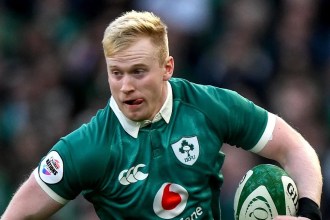Laura Youngson’s inspiring journey began with a simple yet ambitious idea: to organize a high-altitude soccer match on Mount Kilimanjaro aimed at raising awareness about gender inequality in sports. While the 2017 match succeeded in attracting attention—as evidenced by its subsequent documentary and recognition in the Guinness Book of World Records—Youngson unearthed a critical issue that has long plagued women athletes: the lack of sports gear specifically designed for them.
As she observed her fellow athletes during the match, it quickly became evident that they were all wearing men’s or boys’ soccer cleats. This realization propelled her to found IDA Sports, a company dedicated to creating soccer cleats tailored to the anatomical and performance needs of female athletes. Youngson articulated the heart of the matter, saying, “There was this real commercial gap for performance footwear for women.” As women’s sports continue to grow and achieve professional status, it became clear that the footwear industry had not kept pace with this evolution.
### The Rise of Women-Focused Sports Brands
IDA Sports is part of a broader movement, with various companies stepping up to address the needs and desires of female athletes. Unlike traditional brands that have often resorted to the “shrink it and pink it” approach—essentially modifying existing male products for women—fledgling companies like Moolah Kicks, founded by Natalie White, and Saysh, co-founded by Olympic gold medalist Allyson Felix, have differentiated themselves by designing products specifically for women. Moolah Kicks produces basketball shoes that consider the unique biomechanical needs of women, while Saysh has built a running shoe brand that accommodates size changes during pregnancy.
This surge in female-centric brands is occurring amidst rising interest in women’s sports. Recent records show pronounced increases in attendance rates for leagues like the WNBA, amplified by the popularity of standout players. The National Women’s Soccer League (NWSL) teams have reported a significant valuation uptick, with some franchises now valued at over $250 million. New professional sports leagues are continually emerging, underscoring an undeniable shift in the sports landscape.
### Moving Beyond Gendered Marketing
Researchers have highlighted significant issues with the outdated marketing strategies that have targeted female athletes. According to Dae Hee Kwak from the University of Michigan, understanding the needs of women fans and athletes is paramount—particularly when marketing to women. The sentiment echoed by Bonnie Tu, founder of Liv Cycling, resonated with many: “Most of the bikes are meant for men…” she reminisced, recalling her own struggles when riding bikes that weren’t designed for her body.
In a transformational pivot, brands are starting to listen to the nuanced needs of female athletes. Youngson’s IDA cleats, for example, are specifically crafted with a wide toe box, a narrower heel, and shorter studs to better serve female players. This focus on biomechanics signifies a broader understanding and acknowledgment of women’s unique physical requirements in athletic gear.
### The Impact on Established Brands
Transformations in the sports apparel and footwear market have not gone unnoticed by larger companies. Giants like Adidas and Nike have begun investing in women-specific lines, with some notable athletes, such as Sabrina Ionescu, endorsing signature shoe lines. Recently, Adidas released a player edition of its cleat modeled after NWSL star Trinity Rodman, showcasing an evident shift in strategy to cater to a growing demographic of female athletes.
Kwak suggests that along with appropriate products, authenticity is a significant factor for female consumers. They do not wish to receive products that merely change color or aesthetic charm. Instead, they appreciate genuine partnerships with women’s leagues and athletes, adding further credibility and connection to the initiatives.
### Walking the Talk: Corporate Responsibility
Companies today are also realizing the importance of corporate responsibility. Some organizations are investing in sustainable practices and social causes that resonate with their consumer base. Liv Cycling, for instance, not only sponsors female racing teams but also engages in community-driven initiatives. Coalition Snow takes a similar approach by ensuring fair working conditions throughout its supply chains while also pledging to plant trees for every product sold.
This new wave of women-focused brands is acknowledging that female athletes are not merely an afterthought; they are a legitimate market segment that requires dedicated attention and innovative solutions.
### The Path Forward
As women’s sports continue to gain visibility and popularity, brands like IDA Sports, Moolah Kicks, and others are poised to pave the way for more meaningful advancements in women’s athletic gear. The surge in commercial interest, elucidated by Deloitte’s report predicting even greater global revenues for women’s sports, indicates that this is merely the beginning.
Laura Youngson’s journey, which began with a high-altitude soccer match, symbolizes a significant cultural shift in how the sports industry views women’s needs. She urges brands to reconsider their approaches and invest in products that truly reflect the essence of the women’s game. “As the game grows and professionalizes, it should be attractive to brands,” Youngson remarked, highlighting that the opportunity for brands is not just about capturing market share; it’s about fulfilling a long-overdue need for equity and representation.
In conclusion, the ongoing evolution in women’s sports gear signifies a broader narrative of empowerment, inclusivity, and recognition. By elevating female athletes and responding to their unique needs, the sports industry is taking meaningful steps toward bridging the gender gap, ensuring that women have options that truly align with their athletic requirements. The landscape is evolving, and so too should our understanding and support of female athletes. Through women-focused companies, innovative designs, and authentic partnerships, the future looks promising—a testament to the power of collective action and the impact of grassroots initiatives like Youngson’s high-altitude soccer match.
Source link









